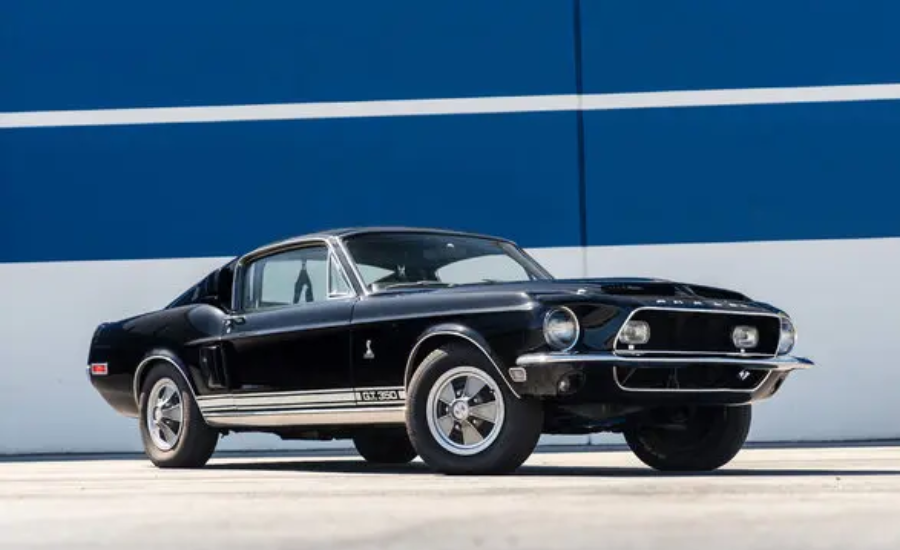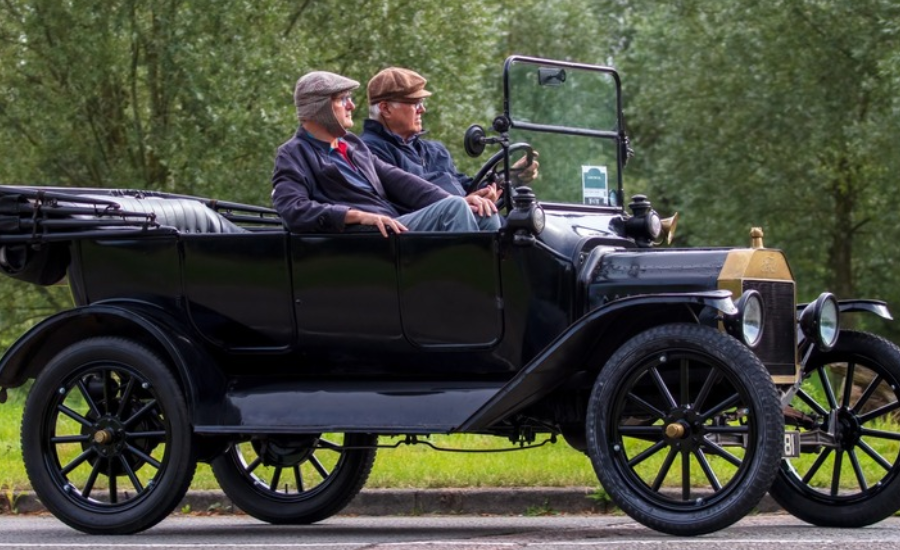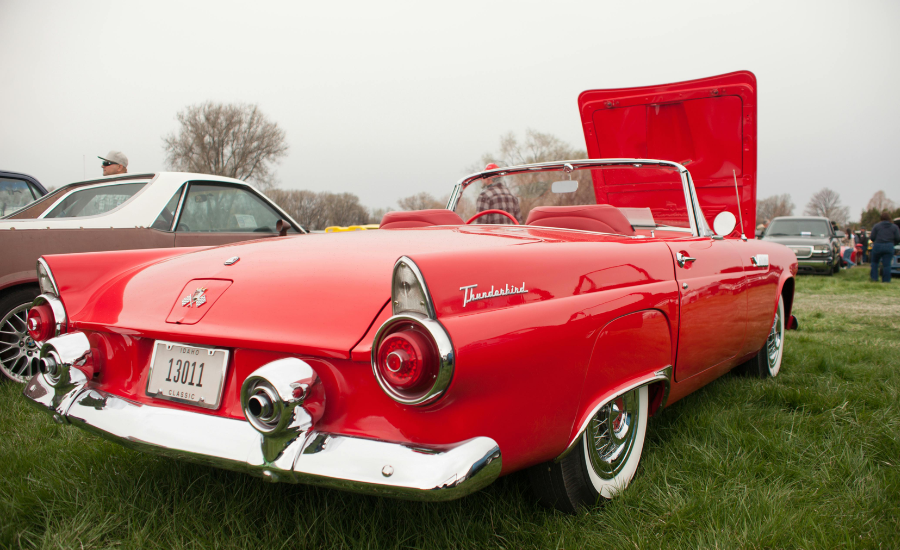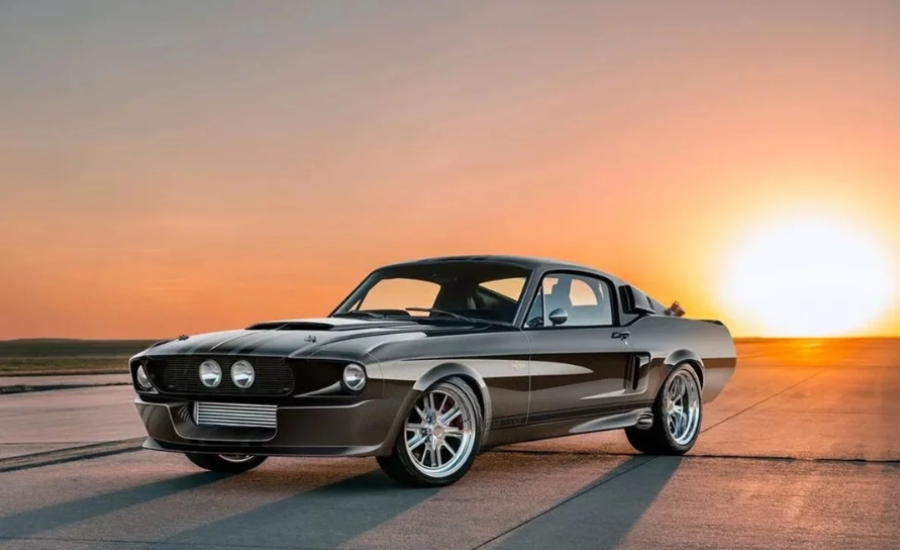Know About: Https://guia-automovil.com/2020/10/07/los-3-mejores-autos-clasicos-de-ford
Ford has been a leader in the automotive industry for over a century, known for its innovative vehicle designs that have made a lasting impact on the market. Among the many vehicles produced by Ford, certain classic models have become iconic, deeply cherished by car enthusiasts worldwide. These classic Ford cars are celebrated not just for their engineering excellence but also for the unique blend of style, performance, and cultural significance they represent. The legacy of these vehicles is a testament to Ford’s enduring commitment to quality and innovation, and they continue to captivate the hearts of those who appreciate automotive history. Whether it’s their distinctive designs, powerful engines, or the nostalgic memories they evoke, these classic models have become more than just cars—they are milestones in Ford’s rich history. For a closer look at these iconic vehicles, you can visit https://guia-automovil.com/2020/10/07/los-3-mejores-autos-clasicos-de-ford.
The Ford Mustang: Its Development and Enduring Influence

The Dawn of an Icon: The Ford Mustang’s Introduction
In 1964, the automotive world was forever changed with the debut of the Ford Mustang, a vehicle that redefined the sports car market. Ford crafted the Mustang to be more than just a car; it was an affordable yet stylish and high-performance machine that resonated deeply with a broad audience. This new entry into the market quickly became a cultural phenomenon, solidifying its status as an American icon. The Mustang’s blend of accessibility and driving pleasure set a new standard, making it not just a car, but a symbol of freedom and innovation in the automotive industry. For more on this classic, check out https://guia-automovil.com/2020/10/07/los-3-mejores-autos-clasicos-de-ford.
Innovative Design and Versatile Features
The Mustang’s design was a masterful combination of form and function, characterised by its long hood, short rear deck, and overall sporty appearance. These elements were not just about looks; they represented a breakthrough in automotive design, setting the Mustang apart from its competitors. Ford offered a range of engine options, which gave buyers the flexibility to choose between high performance or better fuel economy, depending on their driving needs. This approach broadened the Mustang’s appeal, making it accessible to a wide range of drivers, from those seeking thrilling speed to those looking for a stylish daily driver.
Shaping the Future: The Mustang’s Lasting Influence
The Mustang’s instant success didn’t just lead to its own fame; it also sparked the creation of an entirely new class of vehicles known as “pony cars.” These American muscle cars were inspired by the Mustang’s unique blend of style, power, and affordability, setting a trend that would influence automotive design for decades to come. The Mustang’s impact on car culture was profound, particularly among younger drivers who were drawn to its dynamic performance and bold design. It became more than just a car; it was a statement, a way for individuals to express their personality and love for driving.
Continuous Evolution: Keeping the Mustang Relevant
Since its introduction, the Mustang has undergone numerous transformations, each time adapting to the changing automotive landscape while retaining the core qualities that made it a legend. From the original 1964 model to the latest iterations, the Mustang has consistently incorporated cutting-edge technology and design advancements. These updates have kept the Mustang not only relevant but also desirable, ensuring its place in the hearts of car enthusiasts across generations. Despite the many changes over the years, the Mustang has remained true to its roots, embodying the spirit of freedom and adventure that it was born from.
Enduring Legacy and Continued Appeal
The Ford Mustang’s ability to evolve while staying true to its original ethos is what has made it such a lasting success. Each generation of the Mustang has brought something new to the table, whether it’s in terms of performance, design, or technology, yet it always remains unmistakably a Mustang. This balance of innovation and tradition has ensured that the Mustang is not just a relic of the past but a living part of automotive history that continues to inspire new generations of drivers. For a closer look at Ford’s classic cars and to learn more about the Mustang’s rich legacy, visit https://guia-automovil.com/2020/10/07/los-3-mejores-autos-clasicos-de-ford.
Revolutionising the Car Industry: The Legacy of the Ford Model T

When the Ford Model T was introduced in 1908, it marked a revolutionary shift in the automotive industry, fundamentally changing how Americans experienced transportation. As the first vehicle to be mass-produced using assembly line techniques, the Model T made owning a car feasible for the average person, democratising access to automobiles. This innovation not only altered the landscape of vehicle production but also set a new standard for affordability and accessibility in the automotive market. The Model T’s role in making car ownership attainable for a broader audience cemented its place in history as a groundbreaking development. For more on this and other classic Ford models, visit https://guia-automovil.com/2020/10/07/los-3-mejores-autos-clasicos-de-ford.
Engineering Simplicity and Reliability
The Ford Model T was designed with a straightforward yet effective approach, featuring a 2.9-liter four-cylinder engine that provided a maximum speed of 45 mph. This design emphasised durability and ease of maintenance, characteristics that contributed significantly to its widespread popularity. The simplicity of its engineering allowed for easier repairs and lower upkeep costs, making the Model T not only accessible but also practical for everyday use. Its robust build and reliability ensured that it met the needs of a growing number of car owners, further solidifying its impact on the automotive industry. Explore more about this classic model and its engineering feats at https://guia-automovil.com/2020/10/07/los-3-mejores-autos-clasicos-de-ford.
Transformative Cultural Influence
The introduction of the Model T revolutionised car ownership by making it affordable and reliable for a vast number of people. This shift had a profound impact on American society, as it symbolised a new era of progress and innovation in the early 20th century. The Model T’s accessibility helped to shape the American landscape, both physically and culturally, as it facilitated the growth of suburban areas and contributed to the rise of a car-centric culture. Its role in promoting widespread vehicle ownership demonstrated the transformative power of technological advancements in everyday life.
Enduring Legacy and Collector’s Value
Today, the Ford Model T is celebrated not only for its historical significance but also for its enduring appeal among collectors. Its mechanical simplicity and pioneering role in the automotive world have made it a prized possession in car shows, museums, and private collections. Restored Model T vehicles offer a glimpse into the early days of automotive history and continue to capture the imagination of enthusiasts. The Model T’s legacy lives on through its continued presence in automotive culture, serving as a reminder of the remarkable advancements that shaped the modern car industry.
A Historical Gem in Automotive History
The Ford Model T’s legacy extends beyond its initial impact, continuing to influence automotive design and manufacturing processes. Its introduction marked a pivotal moment in the industry, setting a precedent for mass production techniques and making cars more accessible to the general public. As a cherished collector’s item, the Model T remains a symbol of innovation and progress, reflecting its significant contribution to both automotive history and American culture. For a deeper dive into the significance of classic Ford models, including the Model T, visit https://guia-automovil.com/2020/10/07/los-3-mejores-autos-clasicos-de-ford.
The Ford Thunderbird: A Legacy of Luxury and Style

Introduction and Early Years: The Birth of the Ford Thunderbird
The Ford Thunderbird, first introduced in 1955, marked Ford’s entry into the personal luxury car segment. Unlike the sport-focused Mustang, the Thunderbird was designed with an emphasis on comfort and elegance, catering to drivers who valued a sophisticated and refined driving experience. Its launch represented a strategic shift towards offering a vehicle that combined style with personal luxury, appealing to a different market segment than the high-performance models of the era. For a closer look at classic Ford vehicles, including the Thunderbird, visit https://guia-automovil.com/2020/10/07/los-3-mejores-autos-clasicos-de-ford.
Design and Characteristics: Merging Sophistication with Innovation
The Ford Thunderbird distinguished itself through its sleek, eye-catching design and opulent interiors. It was equipped with powerful V8 engines that provided ample performance while maintaining a smooth, luxurious ride. The Thunderbird was notable for its array of advanced features for the time, including power windows, adjustable seats, and sophisticated audio systems. These attributes set the Thunderbird apart from its contemporaries, highlighting Ford’s commitment to blending style with technological innovation.
Evolution and Popularity: From Sporty to Luxurious
Over the decades, the Thunderbird underwent several transformations, evolving from its initial two-seater convertible form into larger, more luxurious models. Each iteration of the Thunderbird was designed to enhance its appeal as a symbol of elegance and comfort, while still reflecting the changing tastes and demands of its clientele. Despite these shifts in design and size, the Thunderbird remained true to its core identity as a luxury vehicle, consistently upholding its reputation for sophistication and high-quality craftsmanship.
Cultural Significance: A Symbol of American Luxury
The Thunderbird’s impact extended beyond the automotive world, becoming an iconic representation of American luxury and refinement. Its appearances in various films and television shows helped cement its status in popular culture, showcasing its role as a symbol of sophistication and success. The Thunderbird’s cultural presence reinforced its image as more than just a car, but as a piece of American history synonymous with luxury and style.
Legacy and Continued Relevance
The Ford Thunderbird’s legacy endures as a testament to Ford’s ability to create vehicles that blend luxury with performance. Its evolution from a sporty roadster to a symbol of opulence reflects its adaptability and enduring appeal. Even today, the Thunderbird remains a celebrated classic, cherished by collectors and enthusiasts for its historical significance and its role in defining American luxury automobiles. For more information on classic Ford cars, including the Thunderbird, explore https://guia-automovil.com/2020/10/07/los-3-mejores-autos-clasicos-de-ford.
Interesting Facts
- Ford Mustang Introduction: The Ford Mustang was introduced in 1964 and quickly became a cultural icon in the sports car market. It was designed to be affordable yet stylish and high-performance, setting a new standard for American muscle cars.
- Mustang Design Features: The Mustang’s design includes a long hood, short rear deck, and a sporty appearance. It offered various engine options, allowing buyers to choose between high performance and better fuel efficiency.
- Pony Car Class: The Mustang’s success led to the creation of the “pony car” class, inspiring other American muscle cars with its blend of style, performance, and affordability.
- Model T Revolution: The Ford Model T, introduced in 1908, was the first car to be mass-produced using assembly line techniques. This innovation made cars more affordable and accessible to the general public, transforming the automotive industry.
- Model T Design: The Model T featured a 2.9-liter, four-cylinder engine and a maximum speed of 45 mph. It’s simple design made it durable and easy to maintain, contributing to its widespread popularity.
- Thunderbird Launch: The Ford Thunderbird debuted in 1955 as a personal luxury car, focusing on comfort and style rather than raw performance. It was designed to offer a sophisticated and refined driving experience.
- Thunderbird Features: The Thunderbird was known for its sleek design, luxurious interiors, and powerful V8 engines. It also included advanced features for its time, such as power windows and adjustable seats.
- Cultural Impact: Both the Ford Mustang and Thunderbird have made significant cultural impacts. The Mustang is a symbol of American freedom and innovation, while the Thunderbird represents American luxury and sophistication, appearing in numerous films and TV shows.
FAQs
Q1. What makes the Ford Mustang iconic?
A. The Ford Mustang is iconic for its affordable performance, stylish design, and cultural impact since its 1964 debut. It redefined the sports car market and became a symbol of freedom and innovation.
Q2. How did the Ford Model T impact the car industry?
A. Introduced in 1908, the Ford Model T revolutionised car manufacturing with assembly line production, making cars affordable and accessible to the masses.
Q3. What are key features of the Ford Thunderbird?
A. The Ford Thunderbird, launched in 1955, is known for its luxurious design, powerful V8 engines, and features like power windows and adjustable seats.
Q4. How has the Ford Mustang evolved over time?
A. The Mustang has evolved through various generations, incorporating modern technology while retaining its classic appeal and performance attributes.
Q5. Why is the Ford Model T a sought-after collector’s item?
A. The Ford Model T is valued for its historical significance and simplicity, representing a key moment in automotive history and appealing to collectors.
Q6. What role did the Ford Thunderbird play in popular culture?
A. The Thunderbird symbolised American luxury and was featured in films and TV shows, reinforcing its status as a cultural icon.
Summary
In summary, Ford’s classic cars, including the Mustang, Model T, and Thunderbird, have each played a pivotal role in shaping automotive history. The Mustang’s blend of style and performance established the “pony car” class, while the Model T revolutionised manufacturing and made car ownership accessible. The Thunderbird, with its focus on luxury and elegance, became a symbol of American sophistication. These iconic models highlight Ford’s legacy of innovation and enduring appeal in the automotive world.
Read More: England Tribune





